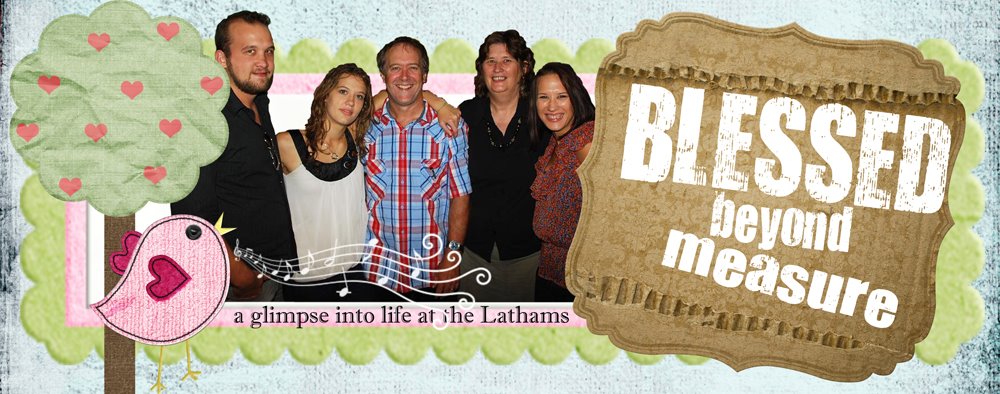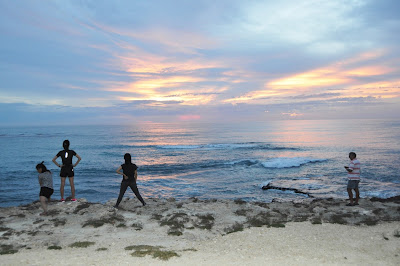DAY 169 – HEADING TO ROBE
We were a
little sad to leave Adelaide this morning.
It is the one capital city we have been in that we have spent the least
amount of time in and there is still so much to see. Still we do plan to come back to South
Australia in the next few years and spend a couple of months here checking it
out more thoroughly.
We had a
pretty big trip today, about 350km to Robe, so we wanted to get away pretty early. We ended up leaving around 8.30am with a
quick stop off to Bunnings to return some goods that weren’t complete when
Steve bought them the previous day. It was a bit
of an effort getting out of Adelaide and climbing back up the range to the
Adelaide Hills with the van on the back… I think we averaged about 40kph for
about 10kms but the roads were pretty good.
We had a
good run all the way to Menginie which was about half way when we decided to
stop for lunch in the park on the lakefront…
The beautiful foreshore on the lake houses a waterfront playground and barbecue area complete with shaded picnic area swimming beach, large carved wooded pelican and an abundance of birdlife and small fish in the lake.
We decided to check out the local bakery and bought a couple of pies so that we could enjoy lunch in this tranquil setting.
The other interesting feature on the waterfront was the statue of “The Birdman of the Coorong” which has been resurrected through a statue of Peggotty’s saddled ostrich on the Meningie foreshore and has become a popular tourist stop for hundreds of passers-by who pose for photos while perched in the saddle.
The project was undertaken to boost tourism in
the town and raise community spirits after it was hit hard by the Millennium
Drought, which gripped much of Australia from 2006 to 2010.
The
story goes that Peggotty was born prematurely in County Limerick, Ireland, in
1864, the under-developed Peggotty spent some time in South Africa, where he
learned to ride his getaway ostrich, before moving to Australia.
After settling in
Adelaide he recruited a gang of boys and together they slid down chimneys and
stole jewellery, which Peggotty had a fetish for wearing while half naked.
The gang
disbanded and Peggotty was next seen draped in jewellery and brandishing
pistols while perched on the back of an ostrich around the town of Meningie.
His demise
came about when fisherman Henry
Carmichael no doubt got the shock of his life when he pulled in to shore after
a day on Lake Albert only to be held up at gunpoint by a bearded child draped
in jewels sitting atop an ostrich.The incident near the town of Meningie on September 17, 1899 was among more than a dozen armed holdups staged by legendary South Australian bushranger John Francis Peggotty – the Birdman of the Coorong.
But it was to be his last.
The shirtless Peggotty fired twice at Carmichael but missed both times. He fled when Carmichael reached for his rifle and took aim at the diminutive bandit in a bid to claim the bounty on his head.
Carmichael set off after Peggotty but was no match for the ostrich, which excelled in the soft sand and vast dunes of the Coorong, about 150km southeast of Adelaide. So he instead took aim from a distance and fired several shots, hitting the ostrich and Peggotty before they disappeared on the other side of a distant dune.
When Carmichael finally clambered up the dune he found the dead ostrich, a broken gold chain worn by Peggotty and a trail of blood leading into the scrub.
The eccentric bushranger was never seen again and his stash of gold chains and jewels are said to be buried deep in the Coorong.
Peggotty’s previous robberies included two murders and the theft of more than a million dollars worth of cash and jewels, which he proudly draped across his body.
But despite only being about the size of a seven-year-old boy, Peggotty was not a child at all.
From Meningie, we had a 145km drive to Kingston along the coastline. Whilst in places it was really petty, it also stank pretty badly, so we were quite happy to get away from the smell and arrived in Kingston around 2pm.
Kingston is pretty a pretty little town and well known for it’s lobsters…The first thing that greeted us as we drove into town was “Larry the Lobster”. Many South Australians would have very fond memories of driving past this ginormous crustacean rising out of the ground. He was first built in order to get more customers through the door at Ian Backlers seafood restaurant in Kingston SE in 1978. And at 17 meters high and 15 meters wide Larry was an instant success and certainly attracted a lot of attention.
One of the other icons in Kingston is the Cape Jaffa Lighthouse… The lighthouse was originally built out to sea from Cape Jaffa, on the Margaret Brock Reef where is stood for 100 years.
In 1974, the local community, with the help of the National Trust, decided to dismantle the structure and to reassemble it again in Kingston SE.
A helicopter
removed the top sections and placed them on shore and the 2,000 ton lighthouse
vessel 'Cape Pillar', transported the heavier sections to a point opposite this
structure where an amphibious craft ferried the section to this site.
It is the first
time in the history of Australia that a lighthouse has been shifted from a site
at sea and rebuilt on land. The Kingston Branch of the National Trust undertook
the mammoth task of reconstructing the lighthouse. It’s new home is now on Marine Parade in
Kingston. Unfortunately it was mid
afternoon on Sunday when we arrived so the lighthouse was closed and there
were no tours of it operating…
From the
Lighthouse we headed down to check out the Kingston Jetty.
 |
| These little spiders had built webs right across the jetty all the way along it... |
 |
| Huge build up of washed up sea grass on the beach |
 |
| Kingston Beach - beautiful white sand |
In recent times there were less boats
using the Kingston Jetty and the authorities responsible for the upkeep decided
that it wasn't feasible to continue spending money on the Kingston one. This
jetty has now been classified as being a recreational jetty and the rail tracks
and refueling facilities have been removed. The local Council is now
responsible for this jetty.
The Cape Jaffa jetty is still a
commercial jetty and continues to be maintained by the South Australian
Department of Transport.
Steve and I both walked out to the end
of this jetty. We were amazed at the
number of spider webs that were on and across this jetty, they were everywhere
and you couldn’t help but walk into them and through them. They were a little bit annoying actually, but
we did managed to see quite a few of the spiders that were the culprits.
 |
| Huge build up of sea grass on their beaches |
 |
| The boat ramp is closed at the moment because of the amount of sea grass washed up in it. |
 |
| RV Friendly Camping area at $10 per night. |
 |
| Lovely clean public amenties are right next door with an outdoor shower |
 |
| Picnic area and parkland next to the RV Friendly Camping Ground |
The other thing we noticed about
Kingston was that it was very RV Friendly and they have set up a beautiful
camping area just across the road from the Jetty where people can stay for up
to 48hrs for $10 a night. There is
water, toilet available and outdoor shower.
If we hadn’t already booked into the Lakeside Tourist Park in Robe we
might have been tempted to stay overnight.
Time to keep moving as it was now after
3.30pm and we still had at last another 60kms to go until we get to Robe.
We arrived in there just after 4.30pm and
started setting up our van. This caravan
park is beautiful. It is situated right
on the shores of Lake Fallmongery, which is a large fresh water lake in the
middle of Robe. The lake was
given its industrial sounding name in 1853 when a Fellmongery was established
there to wash wool salvaged from a wrecked ship in Guichen Bay.
 |
| Our caravan park in Robe |
 |
| Camp Kitchen |
 |
| The office is heritage listed and was the stables of the old homestead. |
The park is also situated on an historical site, park of the original Lakeside Manor which was built between the years 1880-84. The entire floor space of the Manor covers 72 squares. The hallway, which traverses the entire length of the house, is 40 meters long OR 2 cricket pitches long, and 10 foot wide - a car could easily be driven down it! The house has 17 main rooms. The largest room is 30 feet by 20 feet, with several others of almost the same size. Ceilings are 12 feet and 15 feet throughout, depending on the proportions of the rooms. Floors are up to one-and-a-quarter inches thick, of Baltic pine, and all nails are of hand-made copper.
Besides the majestic hallway
and large ballroom, it has to be the grand library containing a bookcase
measuring 18 feet by 12 feet high, made of Blackwood and mahogany, with green
leather strips (dust protectors) embossed with gold leaf. The bookcase
dominates the room which has an outlook over Lake Fellmongery.
Today the caravan park
unique office is situated in the Heritage listed Stables of Lakeside Manor and
is famous for it’s “Pub and Post” floor.
It is a very pretty park and
is lovely and quite with plenty of shelter, shade and green grassy sites and we
are loving our spot here right on the lake.
We have a full day in Robe tomorrow but
still wanted to head out this evening and go for the drive to check out the
countryside and get our bearings for tomorrow when we head out sightseeing,
 |
| Heritage Listed Customs House in Robe |
 |
| Robe Lighthouse |
From here it was a quick drive through town past the Customs house and down to the Marina, a quick drive out to the Lighthouse and round to Cape Dombey where we witnessed a magnificent sunset before heading home.
It seems we are eating dinner later and later these days as the sun is not setting till almost 9pm at night and quite often we are still out trying to fit in as much as we can in regards to sightseeing in any area we are in. The life of a short term traveler on the road.


























































































































0 comments:
Post a Comment